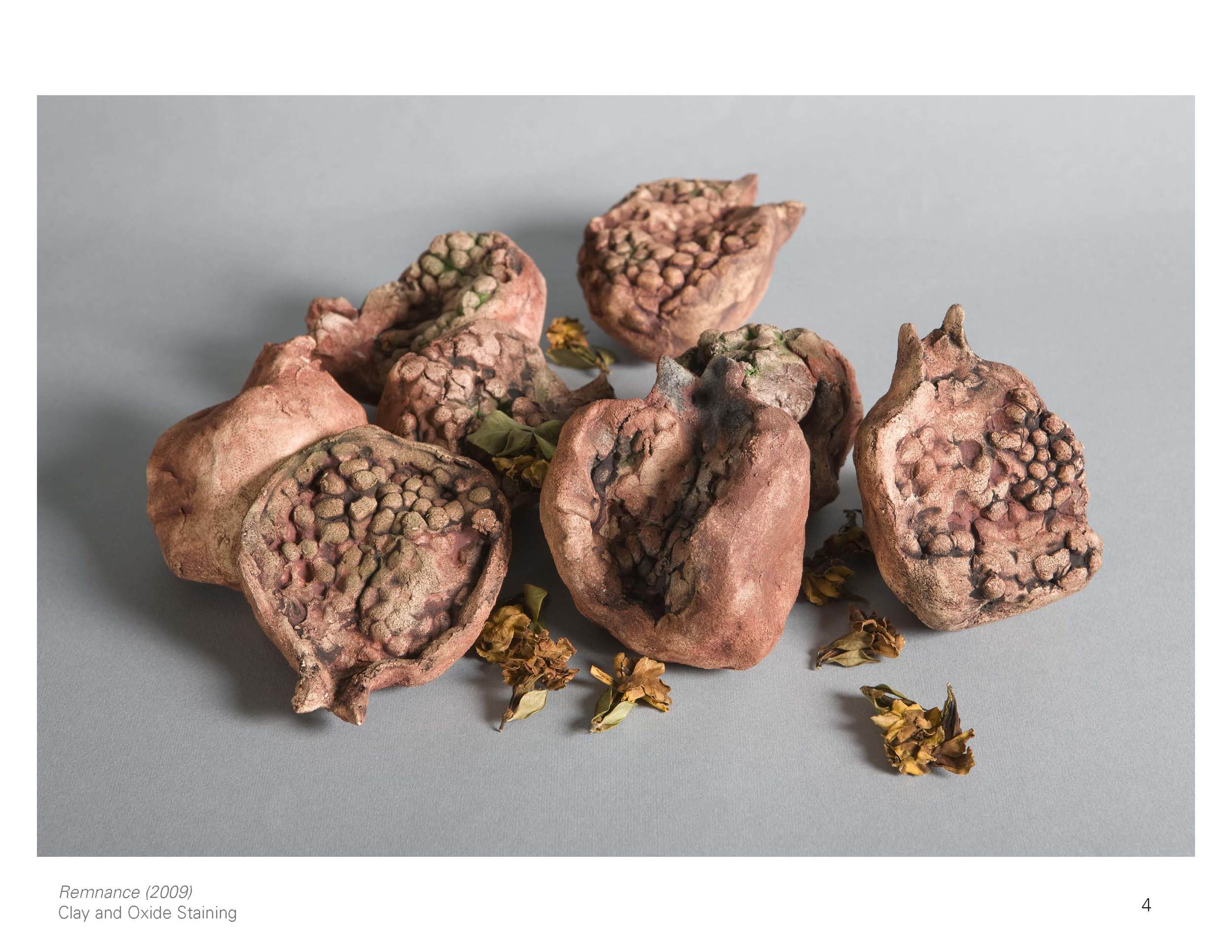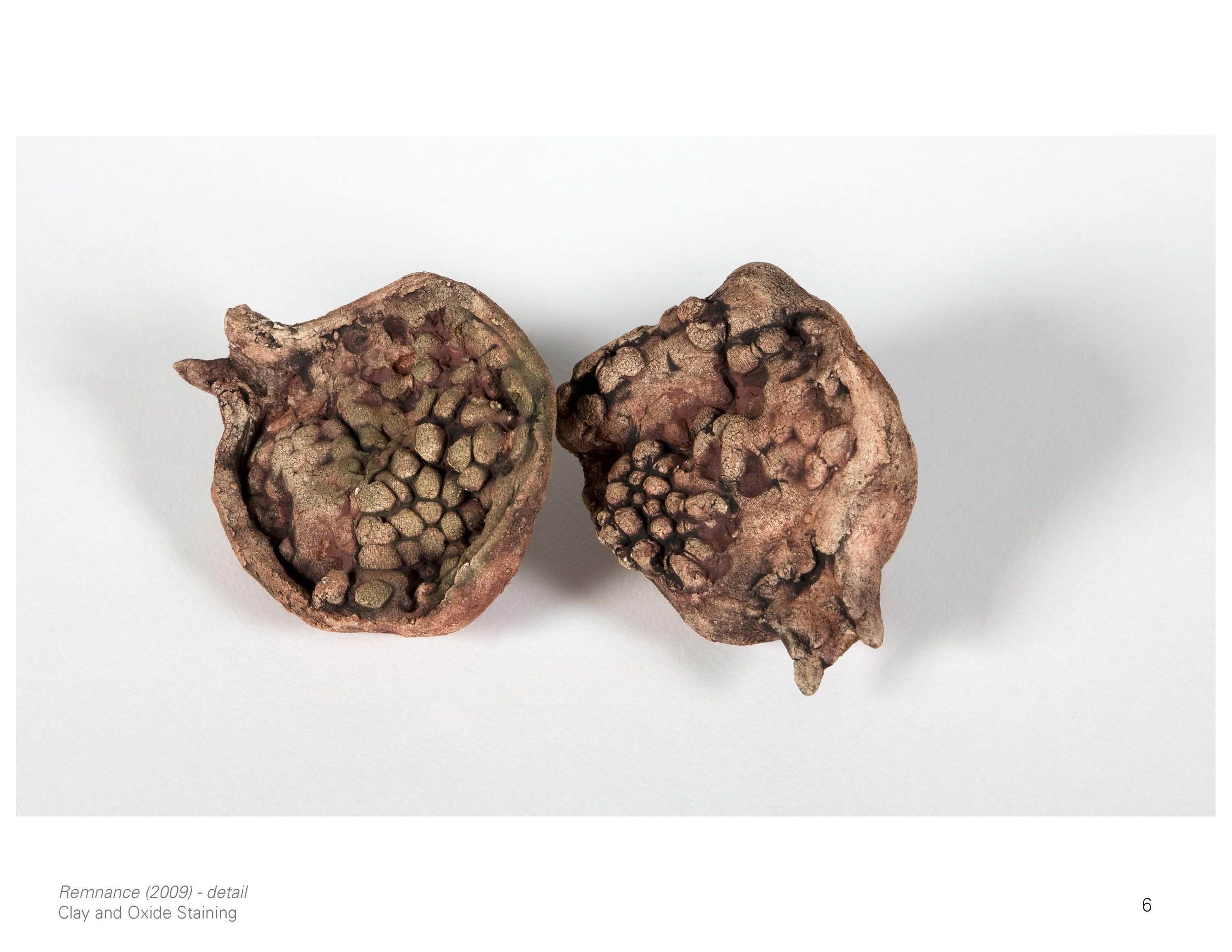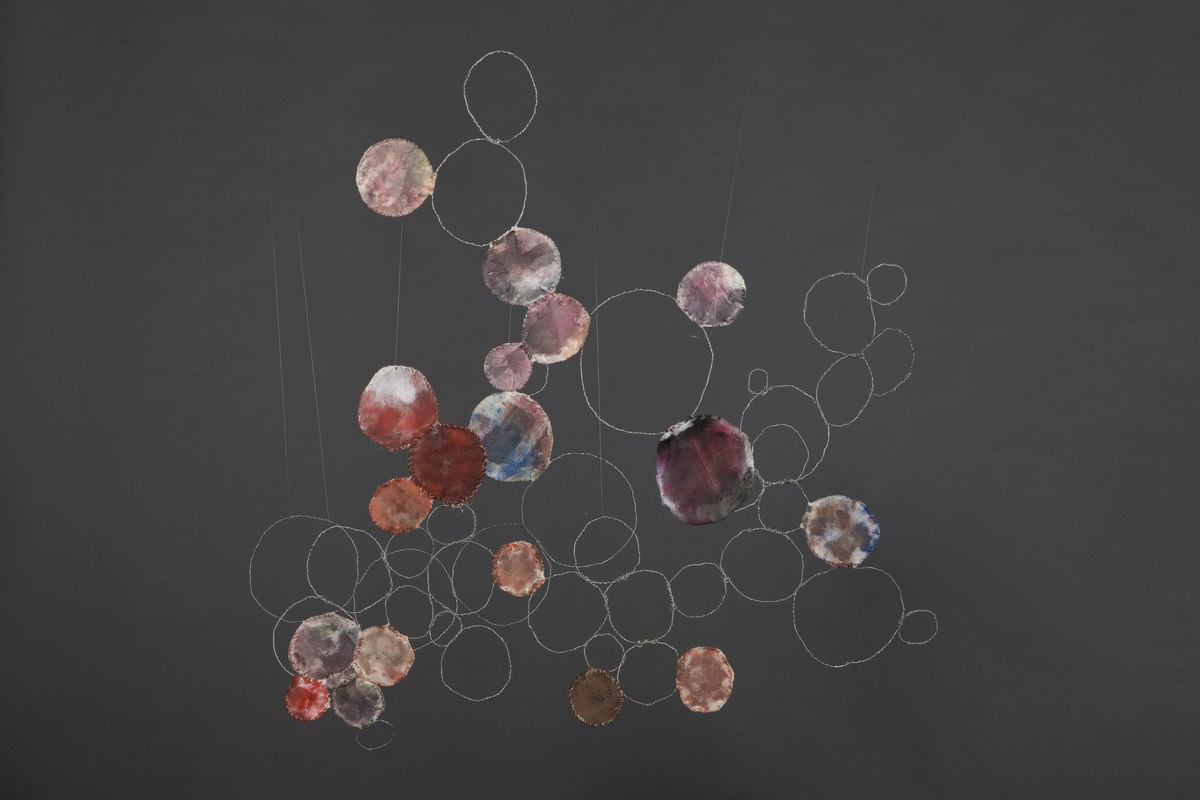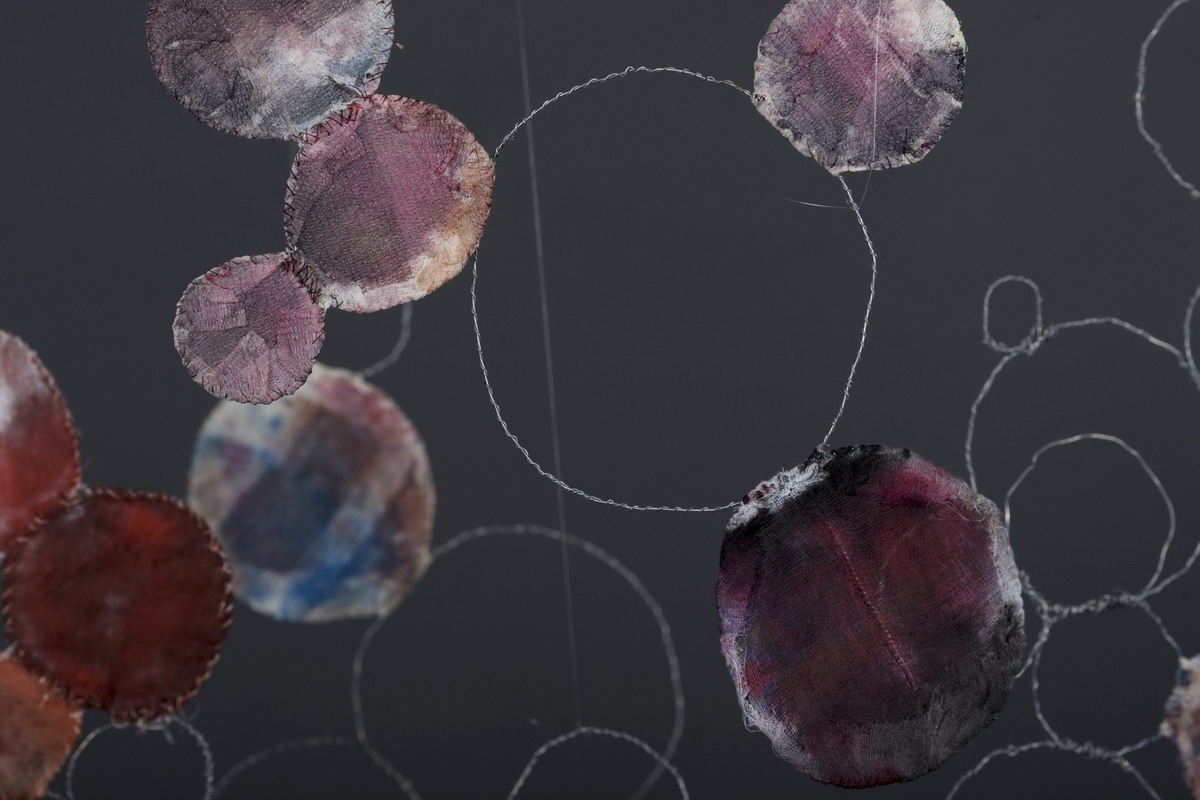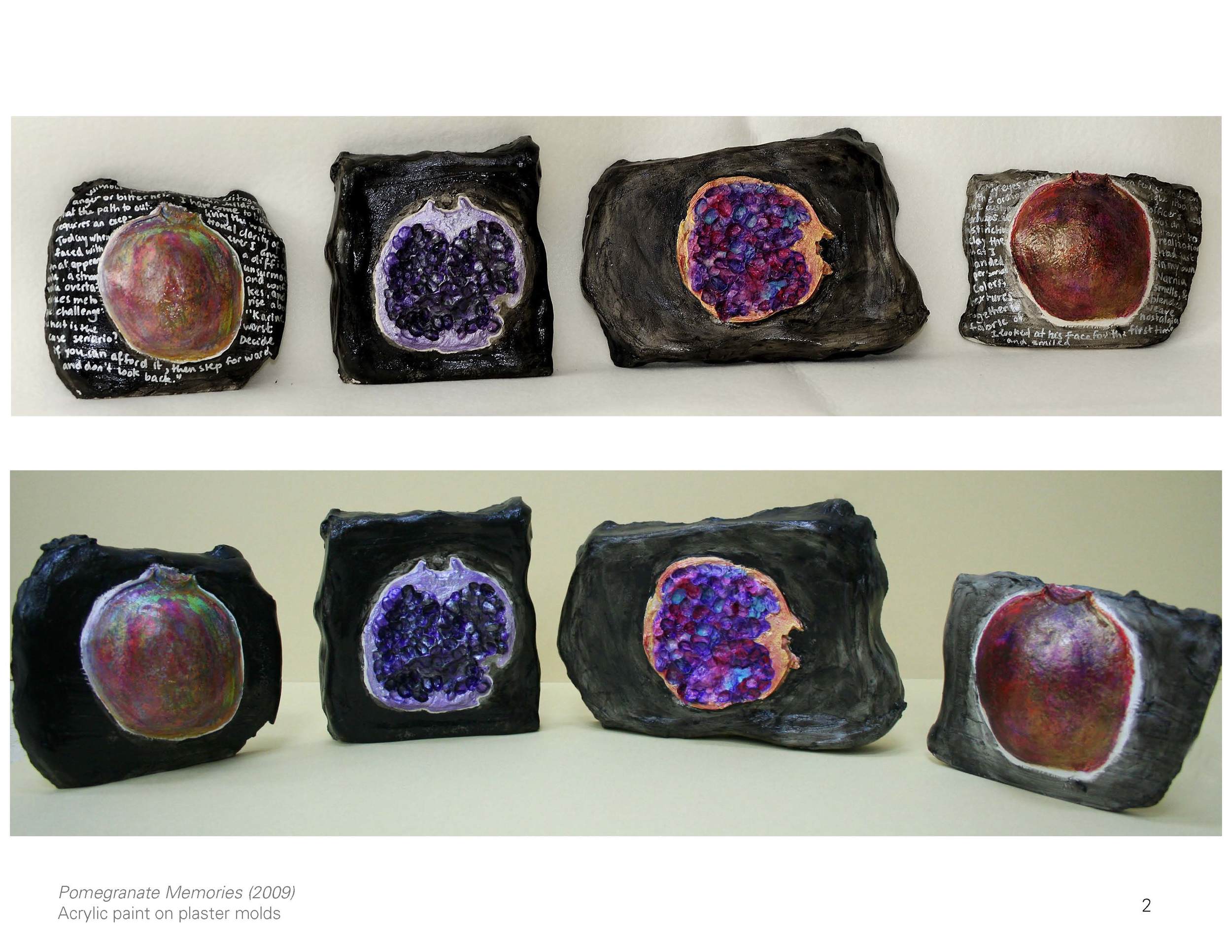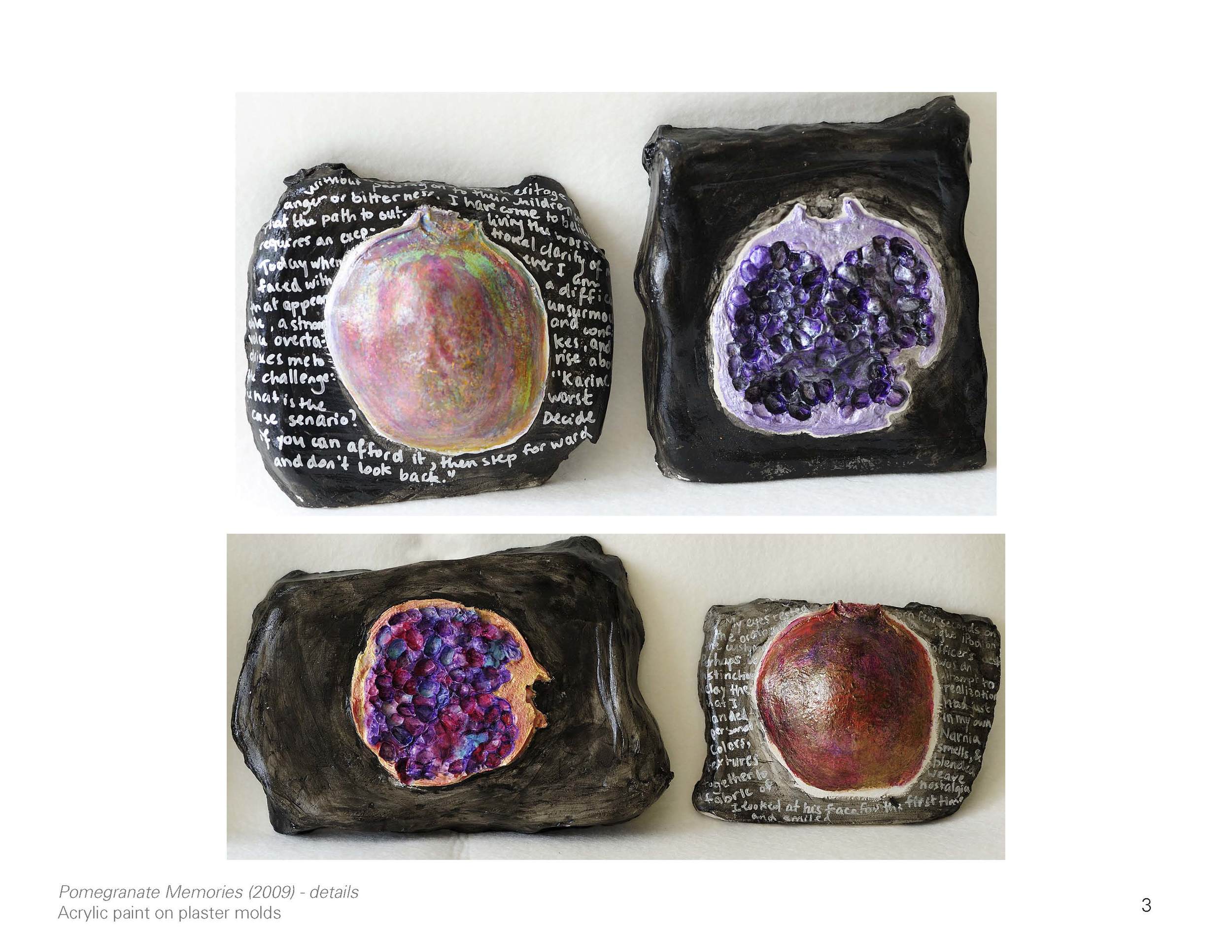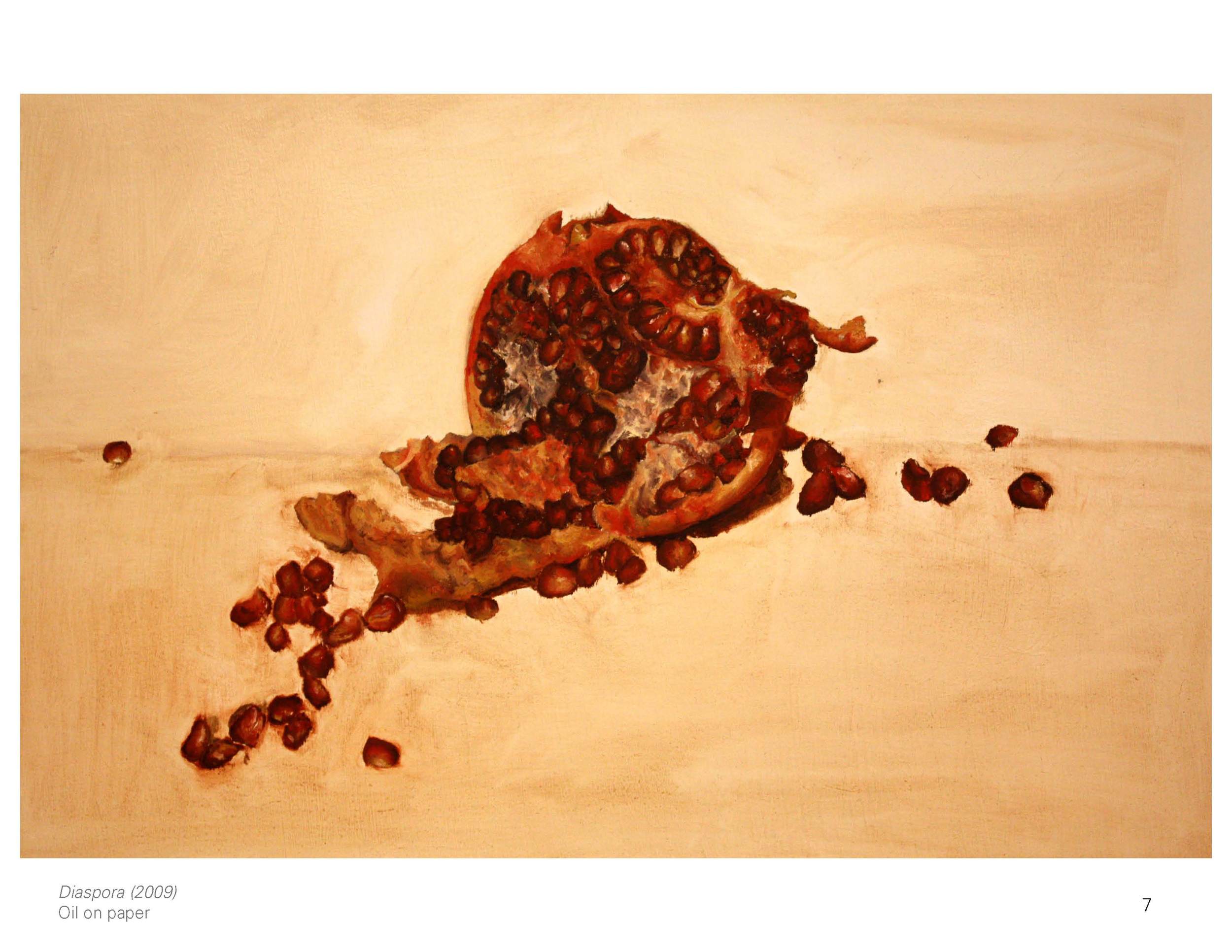In Armenia, the pomegranate has been given the title of “fruit of life”, representing fertility and a possible alternative to the apple, the forbidden fruit, eaten by Adam and Eve. These concepts may be abstract but there appears to be a deeper connection that has attracted me to explore its significance. During the deportation of the Armenian Genocide, women and children were forced to walk from the provinces of Armenia to Syria and Lebanon; a march that lasted several days under dreadful conditions. Many became victims of starvation while many others managed to survive by eating a pomegranate seed a day. This idea further enhances the essence of the fruit to represent the perseverance of a people to stay alive.
While the clay pieces and the plaster book more directly represent the remnants of the trail of the deportation and the struggle for survival, the wire circles evoke something deeper about the people. The Armenian genocide has unfortunately displaced Armenians all over the world in a Diaspora. Though we are all far away, and only several countries have recognized the acts we were subject to, solidarity for each other is most important. The metal circles weaved into one another symbolize the way that we support each other and the way that pomegranate seeds are placed together inside the fruit. The few bandaged circles, represent the several countries to have recognized the fight for our cause.
All my aspirations to reconnect with my roots have concluded in a state of serenity and empowerment that I never suspected to reach.
All works © Karine Sarkissian 2013.
Please do not reproduce without the expressed written consent of Karine Sarkissian.

